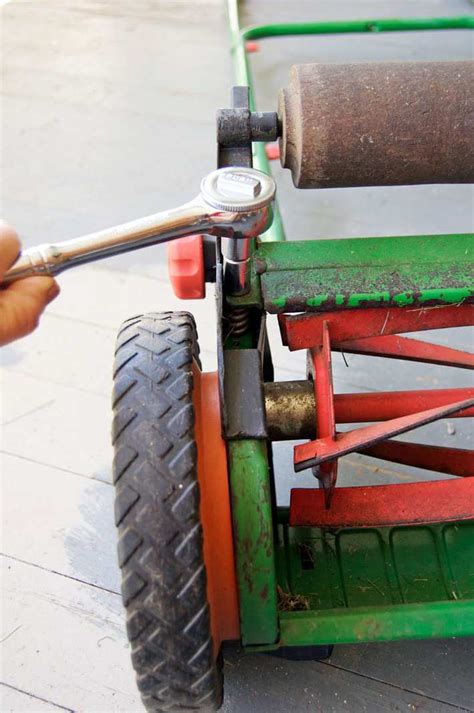How to Sharpen Push Mower Blades: A DIY Guide for a Healthier Lawn
Maintaining a sharp blade on your push mower is crucial for a healthy and beautiful lawn. A dull blade tears grass, leaving it ragged and susceptible to disease. This guide will walk you through the process of sharpening your push mower blades, saving you money and ensuring a perfect cut every time.
Why Sharpen Your Blades?
Before diving into the how-to, let's understand the why. Using a dull mower blade leads to several problems:
- Ragged Cuts: Dull blades tear grass instead of cleanly slicing it, resulting in a brown, unhealthy appearance.
- Increased Disease Risk: Torn grass leaves are more vulnerable to fungal diseases and pests.
- More Work for You: A dull blade requires more passes to cut the grass, making mowing more strenuous.
- Reduced Mower Efficiency: A dull blade puts extra strain on your mower's engine, potentially shortening its lifespan.
Assessing Your Blades: When's it Time to Sharpen?
Before you begin sharpening, inspect your blades. Here are some signs that your blades need attention:
- Rounded Edges: The cutting edge appears rounded or dull instead of sharp.
- Bent Blades: Bent blades will result in an uneven cut. Straighten these before sharpening (if possible; severely bent blades may require replacement).
- Nicked Blades: Noticeable nicks or damage along the cutting edge indicate a need for sharpening.
Tools You'll Need:
- Push Mower: Obviously!
- Socket Wrench: Appropriate for your mower's blade bolt.
- Gloves: To protect your hands.
- Safety Glasses: Protect your eyes from flying debris.
- File: A good quality mill file (a flat file with a coarse and fine side) is ideal. Alternatively, you could use a sharpening steel.
- Work Surface: A sturdy, stable surface such as a workbench or a heavy-duty piece of plywood.
- Clamp (Optional): To securely hold the blade while sharpening.
- Measuring Tape or Ruler: For accurate blade measurements.
Steps to Sharpen Your Push Mower Blades:
1. Removal and Safety First:
- Disconnect the Spark Plug: This is crucial to prevent accidental starting.
- Remove the Blade: Use your socket wrench to carefully remove the blade bolt. Remember the blade is sharp, even if dull, so handle it with care.
2. Cleaning:
- Thoroughly clean the blade of grass clippings and debris. This will allow for a more accurate sharpening process.
3. Secure the Blade:
- Clamp (Recommended): If using a clamp, securely fasten the blade to your work surface. Ensure the blade is held firmly and won't shift during sharpening.
- Manual Hold (Less Recommended): If not using a clamp, use extreme caution. Lay the blade flat on a stable surface, ensuring it won't move.
4. Sharpening the Blade:
- File Technique: Holding the file at a consistent angle (around 20-30 degrees), move the file along the blade's edge in a smooth, controlled motion. Work on both sides of the blade, ensuring an even sharpness. Use the coarse side first for significant damage, finishing with the finer side for a smooth edge.
- Sharpening Steel Technique: If using a sharpening steel, use the same angle and consistent motion, aiming for an even sharpening across the blade.
5. Balancing the Blade:
- Visual Inspection: After sharpening, visually inspect the blade for any unevenness.
- Balance Test: You can use a nail or a pencil to test the balance. Carefully place the center hole of the blade onto the nail/pencil; the blade should be balanced. Any significant imbalance will cause vibration when the mower is running and should be corrected before re-installation. If significantly unbalanced, consider taking the blade to a professional.
6. Reinstallation:
- Carefully reinstall the blade, ensuring it's securely fastened with the bolt.
7. Test Run:
- Once everything is reassembled, run the mower for a short period to test the blade's sharpness and balance.
Maintaining Your Sharp Blades:
Regular sharpening will keep your mower cutting at its best. Consider sharpening after every 10-15 mowing sessions or whenever you notice a decline in the quality of the cut.
By following these steps, you can keep your push mower blades sharp, resulting in a healthier, more beautiful lawn. Remember safety is paramount; always prioritize safety when working with sharp blades and power tools.
